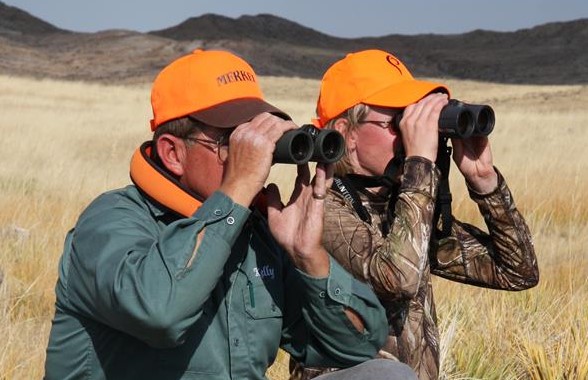Vortex Binocular Families
| Vortex Model | Cost | Purchase Link | Magnification | Linear Field (ft) |
|---|---|---|---|---|
| Bantam HD | $63 | Shop Now | 6.5x | 402 |
| Raptor (2 Models) | $84 | Shop Now | 8x-10x | 339-390 |
| Vanquish (2 Models) | $89-$99 | Shop Now | 8x-10x | 294-325 |
| Triumph HD | $80 | Shop Now | 10x | 334 |
| Crossfire HD (4 Models) | $122 | Shop Now | 8x-12x | 273-393 |
| Diamondback HD (9 Models) | $179 | Shop Now | 8x-15x | 230-390 |
| Viper HD (4 Models) | $399 | Shop Now | 8x-12x | 288-409 |
| Razor HD (4 Models) | $818 | Shop Now | 8x-12x | 285-388 |
| Fury (2 Models) | $903 | Shop Now | 10x | 321-321.6 |
| Kaibab | $864 | Shop Now | 18x | 194 |
| Razor UHD (7 Models) | $1315 | Shop Now | 8x-18x | 194-472 |
The difference between HD and UHD? The “U” is for Ultra. UHD binoculars employ Vortex’s highest tier of optical components and their highest tier of mechanical componentry to result in their most brilliant and robust binoculars offered.
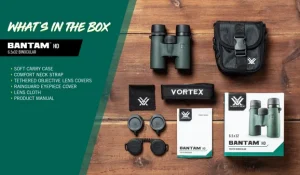
Vortex Bantam – The Vortex Bantam family of binoculars offers a perfect blend of compact design and powerful optics, ideal for outdoor enthusiasts who need reliable, high-performance gear. Featuring fully multi-coated lenses for bright, crisp images, these lightweight binoculars are built to withstand tough conditions with waterproof and fog-proof construction. Perfect for hikers, hunters, birdwatchers, and general outdoor enthusiasts, the Bantam binoculars excel in activities such as wildlife observation, hunting, birdwatching, and outdoor events. Their portable size and durable build make them an excellent choice for those who value both convenience and optical quality in any environment. The Vortex Bantam binoculars are typically purchased by outdoor enthusiasts who prioritize portability and durability. This includes hikers, campers, birdwatchers, and hunters who need a compact, lightweight option for extended use. Their rugged construction and high-quality optics make them appealing to those who want reliable performance in various weather conditions without the bulk of larger binoculars. Beginners and casual users who value ease of use, as well as experienced outdoorsmen looking for a second, more portable pair of binoculars, are key buyers of the Bantam series.
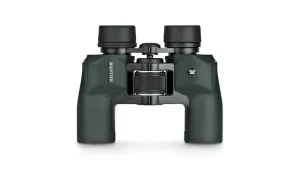
Vortex Raptor – The Vortex Raptor family of binoculars delivers versatile, high-performance optics in a compact, easy-to-use design, making them ideal for a wide range of outdoor activities. With fully multi-coated lenses and a wide field of view, the Raptor binoculars provide bright, sharp images, even in challenging lighting conditions. Built with durability in mind, these binoculars feature a rugged, waterproof, and fog-proof construction, ensuring reliable performance in any weather. Whether you’re a hiker, hunter, birdwatcher, or nature enthusiast, the Raptor binoculars are perfect for wildlife observation, outdoor adventures, and sporting events. Their ergonomic design and impressive optical clarity make them a great choice for those seeking both comfort and quality in a versatile binocular. Vortex Raptor binoculars are popular among a wide range of outdoor enthusiasts, including birdwatchers, hunters, and nature lovers. These binoculars are especially appealing to those who value a wide field of view and need durable, all-weather optics for activities like wildlife observation, sports events, and hiking. Families and individuals who want high-quality optics with adjustable inter-pupillary distance for comfort across different users also find the Raptor series ideal. Their reliability, portability, and affordability make them a versatile choice for both beginners and experienced users.
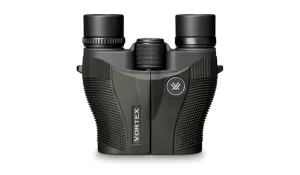
Vortex Vanquish – The Vortex Vanquish family of binoculars offers a compact, lightweight design with a reverse Porro prism system, delivering excellent optical performance in an affordable package. Featuring fully multi-coated lenses for bright, sharp images, these binoculars are perfect for outdoor enthusiasts like hikers, campers, travelers, and wildlife observers who prioritize portability. Their rugged, durable construction ensures they hold up in various conditions, making them ideal for activities like birdwatching, sightseeing, and general outdoor adventures, providing great quality at an accessible price. Vortex Vanquish binoculars are typically purchased by a diverse group of outdoor enthusiasts, including hikers, campers, and travelers who need lightweight, compact, and affordable binoculars for their adventures. Birdwatchers and wildlife observers also appreciate the Vanquish series for its optical quality and ease of use in the field. These binoculars are popular among individuals who want durable, portable optics that deliver bright, sharp images without breaking the bank, making them ideal for casual users as well as more experienced outdoor explorers.
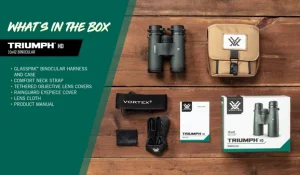
Vortex Triumph – The Vortex Triumph family of binoculars combines rugged durability and high-quality optics at an affordable price, making them ideal for outdoor enthusiasts who need reliable performance in various conditions. With fully multi-coated lenses, these binoculars offer bright, clear images in challenging lighting, and their waterproof construction ensures durability. The Triumph series is perfect for hikers, campers, hunters, and birdwatchers who seek budget-friendly, all-weather binoculars. Whether for wildlife observation, hunting, or general outdoor use, these binoculars provide excellent value and portability for both beginners and experienced users. Vortex Triumph binoculars are typically purchased by outdoor enthusiasts who seek durable, budget-friendly optics for activities like hiking, camping, hunting, and birdwatching. These binoculars appeal to beginners and experienced users alike who need reliable performance in various weather conditions without a high price tag. The price range for Vortex Triumph binoculars generally falls between $100 to $200, offering affordability while maintaining the quality and durability that Vortex optics are known for.
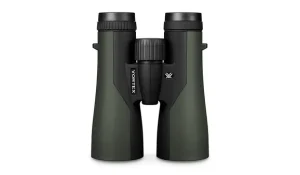
Vortex Crossfire – The Vortex Crossfire family of binoculars combines high-performance optics with durability at an affordable price, making them ideal for all outdoor adventurers. With fully multi-coated lenses and a roof prism design, these binoculars offer bright, clear images and excellent color accuracy. Their waterproof and fog-proof construction ensures they can handle tough conditions, making them perfect for hunting, wildlife observation, hiking, and camping. The Crossfire series delivers reliable, rugged performance, providing exceptional value for anyone seeking quality optics without breaking the bank. Vortex Crossfire binoculars are purchased by a wide variety of outdoor enthusiasts, including hunters, birdwatchers, hikers, and campers who need reliable and durable optics at an affordable price. These binoculars are popular with individuals who want a balance of performance and budget, offering high-quality imaging and rugged construction. They appeal to both beginners and experienced users who require binoculars that can handle challenging environments while providing clear, bright visuals for activities such as wildlife observation and outdoor adventures. Their versatility makes them a top choice for anyone seeking dependable, cost-effective optics.
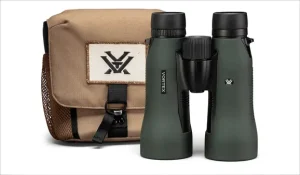
Vortex Diamondback – The Vortex Diamondback family of binoculars is renowned for offering high-performance optics at a reasonable price, featuring fully multi-coated lenses and dielectric prism coatings that deliver exceptionally sharp, bright images with excellent clarity, even in low-light conditions. Built with a rugged, waterproof, and fog-proof construction, these binoculars are ideal for outdoor adventurers who need reliable, durable optics in various environments. Whether spotting game, observing wildlife, or exploring the outdoors, the Diamondback series provides exceptional value with premium features, making it a top choice for both casual and serious users. The Vortex Diamondback binoculars are purchased by a wide range of outdoor enthusiasts who value very high optical performance and rugged durability at a mid-range price. They are particularly popular among hunters, who need reliable, all-weather optics for spotting game in challenging conditions, and birdwatchers and wildlife observers who require sharp, clear images for detailed observations. Hikers, campers, and general outdoor adventurers also favor the Diamondback series for its high quality optics, versatility and ability to handle various terrains and weather conditions. The combination of performance, durability, and affordability makes these binoculars particularly attractive to both serious enthusiasts and casual users looking for premium quality without the high price tag.
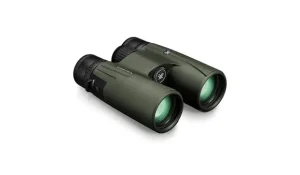
Vortex Viper – The Vortex Viper family of binoculars offers high-end optical performance for serious outdoor enthusiasts who demand exceptional clarity and durability. Featuring extra-low dispersion (ED) glass and fully multi-coated lenses, these binoculars provide sharp, bright images with edge-to-edge clarity, even in low-light conditions, thanks to their XR anti-reflective coatings. Built to withstand harsh environments, the Viper binoculars are waterproof and fog-proof, making them ideal for hunters, birdwatchers, and outdoor adventurers. Lightweight yet rugged, they excel in hunting, wildlife observation, and outdoor activities, offering premium features at a competitive price, appealing to those who prioritize top-tier performance. Vortex Viper binoculars are typically purchased by serious outdoor enthusiasts, including hunters, wildlife observers, and birdwatchers who require premium optical performance in demanding environments. These binoculars are also favored by professional guides and nature photographers due to their high clarity, low-light capabilities, and durable construction. They appeal to those who value superior image quality, reliability in harsh weather, and advanced features at a price point that offers significant value compared to higher-end models. The Viper series attracts individuals who prioritize sharp, detailed visuals and long-lasting, rugged equipment for their outdoor pursuits.
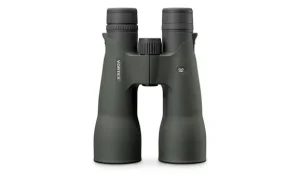
Vortex Razor – The Vortex Razor HD and Razor UHD binoculars represent the pinnacle of optical performance, offering unmatched clarity, brightness, and precision for those who demand the best. Both series feature high-definition optics with extra-low dispersion glass, providing exceptional sharpness and color accuracy, while the Razor UHD takes it further with Ultra High Definition optics for superior resolution and brightness. These binoculars are built for extreme durability, with a lightweight magnesium chassis and waterproof, fog-proof construction. Ideal for professional hunters, guides, serious birdwatchers, and wildlife enthusiasts, they excel in long-range spotting and detailed observation, offering the highest quality imaging for outdoor adventures like hunting, birdwatching, and trekking. Vortex Razor HD and Razor UHD binoculars are typically purchased by serious outdoor enthusiasts and professionals who demand top-tier optical performance. This includes professional hunters, wildlife guides, and nature photographers who rely on the exceptional clarity, low-light performance, and durability of these binoculars for spotting game, observing wildlife, and capturing nature’s details at long distances. Additionally, birdwatchers and conservationists favor these binoculars for their ability to provide crisp, color-accurate images, crucial for identifying species from afar. The Razor series is also a preferred choice for outdoor adventurers, including hikers and trekkers, who seek rugged, waterproof, and fog-proof gear that can withstand harsh environments. These binoculars cater to those who prioritize the best possible image quality and are willing to invest in high-performance optics.
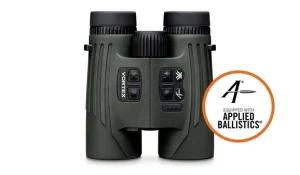 Vortex Fury – The Vortex Fury family of binoculars combines premium optics with a built-in rangefinder, offering convenience and precision for hunters and outdoor enthusiasts. Featuring fully multi-coated lenses and high-density extra-low dispersion glass, the Fury binoculars deliver bright, sharp images, while the integrated rangefinder provides accurate distance measurements for spotting and ranging targets with a single device. Rugged, waterproof, and fog-proof, these binoculars are designed to withstand harsh conditions. Ideal for hunters, long-range shooters, and adventurers who need reliable performance and efficiency in the field, the Fury series offers a versatile solution for both observation and rangefinding. Vortex Fury binoculars are primarily purchased by hunters and long-range shooters who require high-quality optics combined with rangefinding capabilities for accurate distance measurements. They are also popular with outdoor adventurers, including guides and nature observers, who value the convenience of having both a rangefinder and binoculars in one rugged device. The Fury series is especially appealing to those who need reliable performance in challenging environments, such as hunting in varied terrain or engaging in shooting sports where precision is crucial.
Vortex Fury – The Vortex Fury family of binoculars combines premium optics with a built-in rangefinder, offering convenience and precision for hunters and outdoor enthusiasts. Featuring fully multi-coated lenses and high-density extra-low dispersion glass, the Fury binoculars deliver bright, sharp images, while the integrated rangefinder provides accurate distance measurements for spotting and ranging targets with a single device. Rugged, waterproof, and fog-proof, these binoculars are designed to withstand harsh conditions. Ideal for hunters, long-range shooters, and adventurers who need reliable performance and efficiency in the field, the Fury series offers a versatile solution for both observation and rangefinding. Vortex Fury binoculars are primarily purchased by hunters and long-range shooters who require high-quality optics combined with rangefinding capabilities for accurate distance measurements. They are also popular with outdoor adventurers, including guides and nature observers, who value the convenience of having both a rangefinder and binoculars in one rugged device. The Fury series is especially appealing to those who need reliable performance in challenging environments, such as hunting in varied terrain or engaging in shooting sports where precision is crucial.

Vortex Kaibab – The Vortex Kaibab family of binoculars is engineered for long-range viewing, offering high magnification and exceptional optical clarity for spotting fine details at great distances. Featuring extra-low dispersion (ED) glass and fully multi-coated lenses, these binoculars deliver sharp, bright, and color-accurate images even in low-light conditions. Built with a rugged, waterproof, and fog-proof design, the Kaibab binoculars are ideal for long-range hunters, wildlife enthusiasts, and outdoor adventurers who need powerful optics for scanning vast landscapes. Whether for spotting distant game, observing wildlife, or exploring expansive environments, the Kaibab series provides premium performance for users who demand precision and durability in challenging conditions. Best used with a tripod.
Vortex Binocular Accessories
- Glasspak Pro Binocular Harness (click to shop)
- Adjustable harness for a quick, custom fit. Comfortable to wear alone or with a backpack. Quick-release buckles allow you to easily get the harness on and off, and the top loop on the harness allows for one handed access to your binoculars.
- Pro Binocular Adapter (click to shop)
- Adapts your binoculars to most standard tripods – 2 pieces
- Glasspak Sport Binocular Harness (click to shop)
- ensures fast access to your binocular while also protecting against the elements, scratches, and accidental drops they’re vulnerable to in the field. Small size for 42mm and smaller binoculars, Large for 50mm and larger binoculars
- Blaze Glasspak Binocular Harness (click to shop)
- Blaze orange harness pack, accommodates a wide range of binocular sizes
- Glasspak Binocular Harness (click to shop)
- Modest priced binocular harness
- Binocular Harness Strap (click to shop)
- One size fits all attachment for your binoculars and other optics secure to your chest
- Sport Binocular Adapter (click to shop)
- fits any tripod-adaptable binocular and tripod with a 1/4″-20 socket/thread. Its slim profile allows it to fit between the barrels of the largest high-powered binoculars, and a quick-release connector allows the binocular to be removed for handheld use without disconnecting the entire adapter.
- Pro Binocular Adapter Stud Only (click to shop)
- Use in combination with the Vortex Pro Binocular Adapter to mount your binoculars to a tripod.
- Archer’s Binocular Strap (click to shop)
- Keep your binoculars at your side and out of harm’s way
Considerations for Choosing the Right Vortex Binoculars for Your Needs
-
- Wide enough field of vision to quickly pick up the object searched for.
- Proper magnification for the intended use In that instance.
- Proper internal lens coatings to reduce glare into our eyes when using them.
- Firm, but not exceedingly tight, barrel width adjustment.
- Easy focusing, so we can quickly and clearly see what we’re looking at.
- A wide field of view so we can quickly find what we want to focus on, especially when it is moving.
- Clear lenses, so we can see things well in all light, especially low light.
- Excellent light pickup, for the same reasons.
- If we wear glasses, we need – not just want –good roll-down cups that stay in place when rolled down and don’t break off at the fold-down point if they remain in that position for a length of time.
- Acceptable physical weight, especially on long carries and mountain carries.
- A secure, comfortable, protective carrying system also is desirable. None of us want extra weight hanging on our neck. It’s better on our chest and shoulders.
What does exit pupil size mean and what is best in a binocular? Should it equal a human eye pupil size? How is exit pupil size related to magnification?
- Exit pupil is a constant in the binocular but a variable in the human eye, depending on ambient light available to the eye. The human eye may achieve a maximum pupil diameter of 7.5 mm or so, but only in the dark, and your pupil gets smaller in higher light conditions. It is best to have the exit pupil nearly equal to the eye maximum pupil diameter for the light conditions. (5-8mm on average) With binoculars, exit pupil is calculated very simply: the binocular’s objective diameter (we will use 42mm for example) divided by the magnification (we will use 8x or example). Running the equation, we end up with a found value of 5.25, which would express that binocular’s exit pupil diameter in mm’s. The higher the exit pupil number, the brighter the image. A 30mm objective is a bit small for 10x, ok for 8x but perfect for 6x. (Divide 30mm by 6x and you get a 5mm exit pupil. That’s large enough to equal your eye pupil.)
Do I need to buy Zoom Binoculars
- Don’t bother with zoom binoculars. Their twin barrels are difficult to adjust to the same power level. Zoom works well on a rifle scope or spotting scope because there is only one barrel to adjust.
Do I need a carrying harness?
- Carrying harnesses are useful. Vortex has a good one, standard with some of their binoculars. You may want to check out Rick Young Outdoors Ultra-Light Binocular Harness. I have and use both.
Do I need a tripod?
- Use a tripod with binoculars 12x magnification or higher. Not a bad idea with 10x binoculars either. Note that with the increase of magnification, observed linear Field of View (FOV) decreases, so being steady is an important feature, usually necessitating a tripod or monopod.
What is the best magnification to use?
- In a single power binocular, an 8X or 10x magnification will be fine, with 8X best. (Anything larger is a specialty glass, usually best when mounted on a tripod or solid surface to minimize vibration. You will spot as much game or more with an 8X as anything more powerful, but not see significantly more detail with 10X. A lower magnification binocular has a wider field of view (FOV), making it easier to spot game on the fringes of a potential field of view.
How do I know what’s best for my needs and intended uses?
- To choose the best Vortex binoculars for your needs, consider factors like magnification, field of view, portability, and the type of activities you’ll be doing. For long-range hunting or wildlife observation, high-magnification models like the Vortex Kaibab are ideal. If you need a wide field of view for birdwatching, the Razor HD or UHD offer great clarity and brightness. For hikers or backpackers who prioritize portability, lightweight options like the Crossfire or Vanquish are better suited. Hunters needing integrated tech can opt for the Vortex Fury, which includes a rangefinder. For durability in harsh conditions, the Razor HD and Viper models excel with their waterproof, fog-proof construction, making them reliable for rugged use. Match these features with your specific needs to select the perfect model.
Maintaining Your Vortex Binoculars for Longevity
Why Binoculars are Essential for Outdoor Activities
Everyone uses – or should use – binoculars in outdoor activities. Unfortunately, not many understand them fully. Quality optical tools are essential to get the most out of our outdoor adventures. We need to know how to understand them, how to assess them, how get the best product for our money, how to use them effectively and maintain them properly. Binoculars can be indispensable, yet many enthusiasts don’t fully understand their value and functionality. As essential tools for enhancing our outdoor experiences, binoculars help us see wildlife, birds, and distant objects with clarity and precision. Vortex binoculars, known for their superior quality and affordability, are perfect for hunters, bird watchers, and sports fans. Whether you’re looking to invest in high-end optics or find a budget-friendly option, understanding what makes each Vortex binocular stand out will help you make an informed purchase. In this guide, we’ll explore how to evaluate binoculars, what features to look for, and why Vortex is a top choice for outdoor enthusiasts.
After all, vision is our most useful, used and dependable sense … not our hearing, sense of smell or sense of touch. When we see something, even in low light, we get the most benefit from the natural world. Binoculars assist our vision when hunting, wildlife viewing, bird watching, identifying things ‘way out there’ that have caught our attention – because we can see them six to 12 times (or more) larger and with more detail than with the naked eye. Even people up in the cheap seats at baseball and football games can use them to get better views of their heroes.
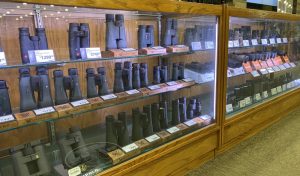
You can spend thousands of dollars on binoculars, but you don’t need to. If you know what to look for, you can get really good binoculars for around $300. Additionally, you’ll be surprised at the quality you can buy for under $300 — if you know what to look for. There are instruments of shockingly outstanding clarity and precision for thousands of dollars, but there are tools nearly as good for much, much less. But often we don’t fully understand how binoculars work or their technical details, nor how best to evaluate them and get the best binoculars for our needs. Sometimes we pay too little; sometimes we pay too much; sometimes we get the wrong binocular.
Choosing the Right Pair – Kevin Wilson
Much like buying a truck, we all have our own preferences when it comes to binoculars. As a rule, though, you’ll want to think about when, where, and how you plan to use your binoculars. Think about the aforementioned magnification and objective lens size, along with clarity, focus, size, weight, and dioptric adjustments (how precisely and easily each eye is focused). Price points may limit the class of binoculars you can look at, but remember, you get what you pay for.
Virtually every outdoorsman and outdoorswoman either owns or uses a binocular. It is arguably the most important piece of equipment we use. We use them for hunting, at the gun range, on the 3D course, when we’re fishing or boating, and we use them for scouting and even bird watching. Indeed, they are critical gear. Granting a magnified view of distance subjects, our binoculars are invaluable. Like most of our other gear, not all binoculars are created equal. As technology has evolved, each size and configuration is designed for a specific application.
If you’re in the market for a new binocular, it’s important to understand the options, identify which ones will best suit your needs, and then then how to properly use them. We’ve all been there at one time or another. Realizing we simply can’t function without a good binocular, we begin to investigate the seemingly complex world of optics. A daunting task to say the least, we are soon confronted with terminology like magnification, objective lens, focus system, field of view (FOV), and more. From there, it’s a matter of evaluating weight, size, finish, lens coating, dioptric adjustments, and accessories. Review the paragraph on specifications below to familiarize yourself with this complex subject.
Here are a few tips that will make your search a bit easier and translate the optical dictionary into everyday language.
Where to Start when Choosing a Binocular
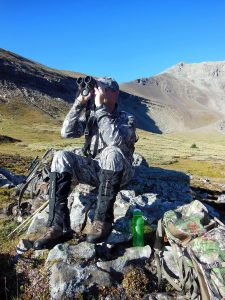
Application is the most important consideration. Before you jump into the Internet or visit any retailers, make a list of activities and locations in which you could put your binocular to work. For example, determine whether the binoculars will primarily be used for hunting, boating, wildlife viewing, or other use. Why do this? The answer is complex, but to simplify, a tree stand hunter for instance, hunting thick timber likely requires different optics than a sheep hunter who can often see several miles in open terrain. Similarly, a sea captain on the open ocean will need something very different than a birder whose viewing distances will rarely be more than 100 yards. If you’re a sheep or goat hunter, for instance, you will probably want an ideal mix of lightweight, high quality, high-powered, and durable optics – because you’re carrying them into the backcountry. In stark contrast, if you’re a waterfowl hunter using your binocular to scout fields and waterways, you may be less concerned with weight and size – mostly because you’ll be viewing from your vehicle. On the other hand, your field glasses are constantly in and out of your backpack, durability may be more of a consideration. To illustrate diversity and how application matters, I can tell you that I personally own eight different binoculars, ranging from 7×21 to 12×50 and several sizes in between. Each has its intended use and is better suited for variable applications.
Selecting Power/Magnification of a Binocular
Aside from size, durability, and cost, there are several technical aspects that should be evaluated. As you begin your quest, the most obvious decision before you is choosing a desired power or magnification. Magnification is the most common term we hear, and use, when we refer to optics. Essentially, the greater the magnification, the closer the subject being viewed will appear through the lens.
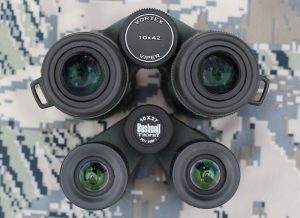
Marked on each binocular are numbers such as 8X42 or 10X42. The first number indicates the magnification. For example, 10X is more powerful than 8X. With 10X binocular, the subject will appear 10 times closer than it would with the naked eye. In other words, it is magnified by 10 times. Similarly, with a 12X optic, the image will be viewed 12 times larger than it is with the naked eye. Again, as you decide which magnification is best for you, consider your application. For example, if you hunt in tighter areas, with lots of trees and your visibility may be limited to subjects under 100 yards, considering a lower magnification that allows you a greater Field of View (F.0.V.), may be more advantageous. Tree stand hunters for instance, often find themselves in this situation. A binocular in the 8×30 category might be a good choice. At the other end of the spectrum, if you’re glassing great distances, with several miles of visibility, a 10x or even 12x magnification may be better suited for that application. My favorite binocular for hunting open grassland habitats for pronghorn antelope and mule for example, is a 12×50. It provides extra magnification along with a larger F.O.V.
It is important to recognize that higher magnifications are more difficult to steady. They also have a narrower field of view and they gather less light than lower-powered binoculars. With the growing popularity of higher-powered binoculars such as 10X and 12X, many outdoorsmen are using mounting systems such as a tripod or window mount to stabilize the optics.
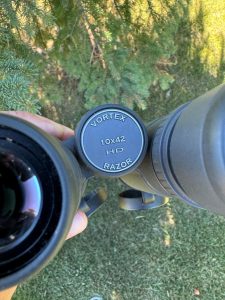
The latter number refers to size of the objective lens (the larger lens at the front of the binocular) measured in millimeters. The bigger the objective lens, the brighter the image will appear. This is why you’ll often see a bigger objective lens with a higher-powered binocular; it increases the light gathering capability. This is an important consideration for those of us who use our optics under low light conditions like early morning and late evening.
More on Field of View (F.O.V.)
As you look through the lens of the binocular, it is important to understand F.O.V. More clearly defined, this is the distance in width that can be seen, i.e., the number of feet per 1000 yards (or number of meters/1000 meters). The objective lens determines both the F.O.V. and, in turn, the amount of light that the optics can take in. The larger the size of the objective lens, the greater the amount of light it gathers. As with cameras, some binoculars are considered wide angle and, as such, have a greater than average F.O.V. Most importantly, remember that a lower magnification binocular has a greater F.O.V. and those with higher magnifications have a comparatively lower, or ‘narrower’, F.O.V.
Focus & Dioptric Adjustment of a Binocular
Some binoculars are focus-free. This means that they are always in focus. I’m not a big fan of these myself, because they don’t allow the user to fine-tune the focus as precisely as those with a manual focus option. On that note, most have a center focus wheel. This allows the user to literally dial the lens focus into the desired position, bringing the subject into crisp focus. A typical scenario might be glassing a moose through a narrow opening in the trees. By dialing the focus wheel, the user is able to focus on the distant moose while theoretically blurring nearby trees and branches. Many of today’s higher-end binoculars have an additional fine-tuning focus dial option, the dioptric adjustment, that allows the user to initially focus the right eye individually, and then bring the left into focus with the primary focus wheel.
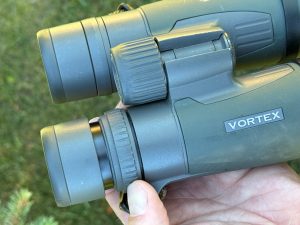
Weather and Shock Proof
In many instances you get what you pay for, but cost is not the only consideration. For those of us who use our optics in all types of weather conditions and are hard on them, binoculars that are shockproof and weather resistant are critical. Many binoculars are now made with a rubber armor, e.g., Bushnell’s RAINGUARD® finish. Constantly bumped and banged around, binoculars are at risk of damage. Thankfully, many manufacturers have taken steps to shockproof their optics. These are often available in a black, green or camo finish.
In my opinion, having a binocular that is waterproof and fog proof is invaluable. I’m frequently using my optics in the snow, rain, wind, and extreme cold. If moisture gets inside, they become useless. Particularly when I’m hunting, the last thing I want is fogged lenses when a big whitetail steps out in front of me.
What About Cost?
With plenty of brand names to choose from, we can look at lower consumer level optics right through to upper-end manufacturers that make the best of the best. While each makes higher and lower end models within their specific line of binoculars, Tasco for example is more affordable but also lesser quality than European made Zeiss or Swarovski optics. Alternatively, Bushnell makes a variety of middle to higher quality binoculars, specifically the ELITE series designed for the average discerning outdoorsman. The sky is the limit when it comes to price. You can spend under $100 for an economy grade binocular up to several thousand dollars for the best of the best. For most average to slightly above average binoculars, count on spending between $300 and $900 USD.
Why Quality Makes a Difference
Peruse any optics cabinet, and you immediately notice disparity in the price tags. Most often, price point correlates with quality. In the end though, it will always serve you well, to invest in the best quality binocular you can afford. The glass itself, how it is refined, and the protective coating on the glass, varies immensely between manufacturers and models. The most important step you can take begins with first researching the options within the price range you can work with. First do some research online. With volumes of information, including specifications and consumer reviews available on the Internet, first gather intelligence in the comfort of your home. Then visit your local retailer. Nothing beats handling and looking through optics in person. It’s one thing to do this in the store, but ask the staff if you can go outside in natural light and try looking through the various pieces to compare the image sharpness, contrast, light transmission, color saturation, and clarity across the entire Field of View (F.O.V.). Be sure to inquire about the lens coatings applied by each manufacturer (i.e. specifically how those coatings protect and affect or enhance light transmission, and if the coatings are anti-reflective).
Rangefinding Binoculars
Range-finding has seen a lot of advancements, and for a little more than a decade now, it’s been integrated into some binoculars. Today, several manufacturers offer range-finding binocular options, creating an enormous advantage for those preferring to carry and use only one piece of optical equipment as opposed to a binocular and a separate rangefinder. Leading the introduction was Swarovski Optik with their their EL Range early on, and others soon followed with their own versions.
The latest generations of range finding models can be configured to suit the user’s specific need, including the transfer of specific ballistics data. These new binoculars also provide air pressure and temperature readings, to help hunters in accurately assessing each unique shot situation. And, as if that’s not enough, their innovative tracking assistant actually identifies the area where your last shot hit the downrange target, providing valuable information for successive shot adjustment, and wounded animal tracking. To say that these digital wonders have entered a new era in binocular technology, would be an understatement indeed.
Roof Prism versus a Porro Prism
The primary difference between roof prisms and Porro prisms in binoculars lies in their optical design, which affects size, weight, and image quality.
- Roof Prism: Roof prism binoculars feature a streamlined, straight-barrel design, with the eyepiece and objective lenses aligned in a straight line. This design allows for a more compact and lightweight build, making them highly portable and easier to carry. They are also more durable due to fewer moving parts and internal components that are easier to waterproof, contributing to their ruggedness in outdoor conditions. While early roof prisms had lower image quality compared to Porro prisms, modern versions use advanced coatings like phase correction to enhance brightness and clarity. However, roof prism binoculars are generally more expensive to manufacture at the same optical quality level as Porro prisms
- Porro Prism: Porro prism binoculars have a traditional “dog-leg” design, with offset eyepiece and objective lenses, giving them a wider appearance. Due to this design, they tend to be bulkier and heavier than roof prism models. However, they generally offer superior depth perception and a wider field of view, often at a lower price point. Porro prisms also typically provide better light transmission, producing brighter images in low-light conditions without requiring complex coatings. On the downside, they can be more vulnerable to damage and harder to waterproof because of the external arrangement of internal components.
In summary, roof prism binoculars are preferred for their compactness and durability, especially in rugged environments, while Porro prism binoculars offer better image quality at a lower price, particularly in terms of depth and field of view. The choice often comes down to user preference for size, portability, and image quality.
Understanding Binocular Specifications – Glenn Helgeland
Few other tools used by hunters and outdoors folk are so challenging to understand. This often leads to inefficiency, frustration and incorrect binocular purchases. You want to buy the right gear at the right price. (I remember once standing behind a man at a general hardware store buying the cheapest binoculars I had ever seen and wondering whether they would fog up, could he focus them easily, were the barrels properly aligned, how many minutes could he look through them without getting a headache, etc.) In short, you are looking for quality of glass, which can be summarized by referring to density and purity. The denser a lens element is, and the purer the glass (free from inclusions, bubbles, like a diamond), the less impeded light will be as it passes through the element, yielding a brighter, sharper image.
Design elements and construction go somewhat hand-in-hand. For example, a lift-to-unlock diopter, is a higher-tiered design element, offering the user a more robust and secure diopter adjustment, not prone to inadvertent movement. In short, a binocular with this feature will hold it’s diopter settings through use. As we see these design element improvements increase running up a product line, we also see overall construction – grades of materials, fit/finish, and implementation of higher-strength alloys vs. polymers employed also increase. Prices follow this upgrade in construction.
Binocular Terminology and Specifications according to Vortex:
- Adjustable eyecups (height only) –Eyecups retract in and out (or fore and aft) to allow the user to set the eye-relief perfectly for the facial structure, or if they’re wearing glasses. If you wear glasses, put them against the lenses and don’t move the binocular. Movement will scratch your glasses lenses. If you need to reposition the binocular, lift it from your glasses first.
- “Advanced” ergonomics (Viper) – Vortex spends much time studying how the human hand holds a binocular, manipulates the mechanisms and how the face interacts with the system to optimize fit.
- “All-around” image quality – From edge to edge clarity, brightness and lowered chromatic aberration, an image that is all-around exceptional. It is possible to have brilliance in image quality as viewed from the center, but the edges are poor.
- Angular field of view – This would be the expression of FOV (field of view) as measured at an angle through the optic. The linear FOV, or the width of the image, would be derived from it.
- Apochromatic (only in Razor HD & UHD) – Specific lens design to correct light aberrations and ultimately result in an exceptionally clear and sharp image.
- Anti-reflective coatings – a special surface coating that prevents errant light from “washing” the image out with harsh reflections. Especially useful when using the binoculars in low-angle light situations, i.e., sunrise, sunset.
- Armortek – Vortex proprietary lens coating.
- Argon gas purged – the internal areas of the binoculars are purged of air and replaced with Argon to improve visual clarity, reduce fogging and corrosion on the inside of the unit.
- Chromatic aberration – An optical phenomenon that, when visible, could best be described as an “electric blue/purple” fringe around contrasting colors in the image. The lower the incidence of chromatic aberration (CA), the generally better perceived image quality.
- Close focus – the closest distance at which the binocular can be completely focused.
- Compact binocular – Generally speaking, any binocular under 42mm exit pupil. Most commonly encountered –32mm, 30mm, 28mm, 26mm, or 25mm.
- Dielectric prism coating – Optical coating used for image enhancement.
- Diopters – Opto/mechanical adjustment on the binocular that properly focuses the binocular for the user.
- Eye relief – The measurement at which the image is in full view, made from lens surface to the user’s eye.
- Exit pupil – Diameter of light ray coming through the optic. Faces viewer’s eye. Determined by magnification and objective diameter, it is a general rule that the larger the exit pupil, the more visual information is available to the viewer, resulting in a brighter image.
- Fully multi-coated lenses – Lenses that are fully multi-coated have multiple strategic optical coatings applied to all lens surfaces.
- HD optical system – Referring to the composition of the glass, prisms, and on the whole, the optical system layout.
- High-definition images – Brilliant, sharp and well-colored images with great depth and definition.
- Inter-pupillary distance – The distance in millimeters between the centers of each pupil. Often said as the distance between the centers of your eyes.
- Ergonomically designed – Designed to work well with the hand.
- Ergonomic control – How well the binocular fits the hand.
- Eyeglass-friendly – Binoculars that have adjustable eyecups will allow users wearing eyeglasses to utilize them without having to remove their glasses.
- Fog proof – Lenses do not condense in humid conditions
- High contrast views – Refers to the level of contrast observed of the image through the binoculars. A high contrast would be preferred and should be expected.
- Hydrogen gas purged – Vortex uses argon and nitrogen for purging. Inert gases are used to expel atmosphere from the internals of the optic and prevent condensation internally,
- Low-dispersion glass – Optics glass specialized in reducing aberrations in light.
- Objective lens diameter – the diameter of the distal, or front lens of the binocular, expressed in millimeters.
- Phase correction – Increases contrast and resolution in optics by controlling reflections and aberrations of light as it passes through the system.
- Rubber armor –Armor encapsulating the binocular to provide traction in your hand, as well as bump/impact resistance.
- Shockproof – Shockproof binoculars are built with robust materials that can absorb and dissipate the energy from impacts. This often includes rubber armor coatings that protect the internal components from shocks and drops.
- Tethered objective lens covers – a lens cover designed to semi-permanently attach to the binocular.
- Tripod adaptable – binocular has a provision to allow for the attachment of a tripod adapter, like the Sport- or Pro-Series tripod adapter. Typically placed, at the center-hinge of the binocular.
- Waterproof – resists penetration of water and water vapor
- XR lens coating (only in the Viper HD) – Vortex proprietary lens coating.
- XR Plus lens coating (only in Razor HD & UHD) — Vortex proprietary lens coating.



